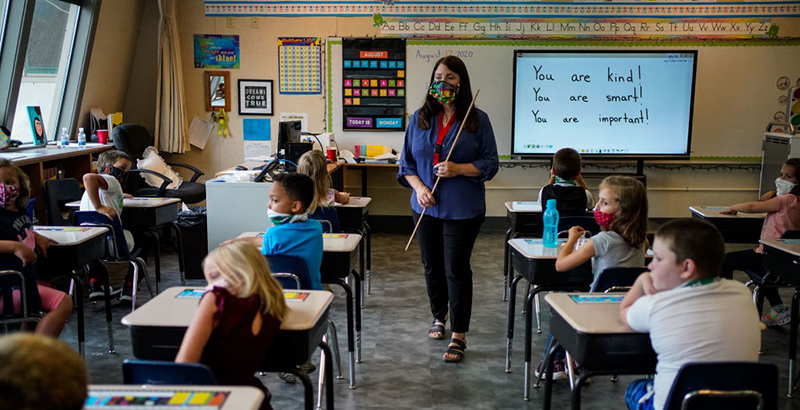State Convenes 50-Member Working Group to Confront Stress and Attrition Among School Employees

Get stories like this delivered straight to your inbox. Sign up for The 74 Newsletter
In a meeting with Portland teachers in November, state Senator Michael Dembrow, D-Portland, “really got an earful” about how bad staff shortages had gotten.
A lack of substitute teachers, special education teachers and paraprofessionals as well as classified workers such as bus drivers and janitors had many school employees taking on extra work and being stretched too thin.
They were struggling with burnout, Covid-19 protocols, a lack of lesson planning time and student behavioral issues.
“People were really speaking from their hearts,” Dembrow said.
In response, Dembrow, who chairs the Senate Education Committee, spearheaded a workgroup last week that he hopes will tackle some of the key issues he heard from those Portland teachers and from teachers and school leaders he’s talked with around the state.
The working group of 50 includes teachers, representatives from the Oregon Department of Education, the state’s largest teachers union, the Oregon School Boards Association, the Coalition of Oregon School Administrators and several colleges and universities around the state. It also includes four state representatives, and state Senator Lew Frederick, D-Portland, who co-chairs the Joint Ways and Means Committee.
According to a presentation shared by Dembrow, the group intends to address:
- The lack of substitute teachers and the ripple effects on other teachers and administrators.
- The lack of teachers and assistants for special education classes, called by Dembrow the “crisis in special education.”
- The lack of planning and grading time for teachers.
- Student behavioral issues and lack of time for teachers to intervene.
- The many employees considering retiring midyear.
- Stress caused by too many meetings, paperwork, new curricula, Covid-19 protocols, pressure to catch-up from last year, standardized tests.
- Loss of mentorship.
- Attacks from parents.
- All of the above coming down especially hard on educators of color.
According to a report from state employment economists Gail Krumenauer and Anna Johnson at the Oregon Employment Department, the state is facing a tight labor market across several sectors, including education. They reported that employers in Oregon and nationwide posted record numbers of job vacancies last summer.
Public education losses mainly occurred in K-12 schools and community colleges. Public K-12 schools lost about 7,200 jobs between the winter and spring of 2020, and by the spring of 2021, had only added back about 1,100 of them, according to the report. Hiring did ramp up for the return to fully in-person instruction in fall 2021, but not enough to fill all openings, the report said.
According to a recent job survey by the Employment Department, school districts reported more than 1,820 job vacancies over the summer, most of which required education beyond a high school diploma.
Districts reported more difficulty hiring during Covid-19 but said shortages do not seem to be entirely Covid related. They said the top reasons behind hiring difficulties were a lack of applicants and the perception of unfavorable working conditions in schools.
The work group’s immediate goals are to identify ways to lower educator stress and burnout, evaluate which state requirements and mandates on teachers are too burdensome and and should be suspended and to slow the number of school employees who are leaving for other jobs or early retirement.
Dembrow and other state school and education leaders fear some teachers will leave the profession during the winter break or retire early.
The group will split into nine or 10 subcommittees that will each handle a specific challenge facing teachers and schools.
They hope to come up with immediate solutions to propose for consideration by the Oregon Legislature when it convenes in February.
In the long term, they hope to find solutions to the state’s more longstanding recruitment and retention issues and bring people who have left education back into the field.The penultimate goal is a diverse, stable, satisfied teacher workforce, according to Dembrow.
Oregon Capital Chronicle is part of States Newsroom, a network of news bureaus supported by grants and a coalition of donors as a 501c(3) public charity. Oregon Capital Chronicle maintains editorial independence. Contact Editor Les Zaitz for questions: [email protected]. Follow Oregon Capital Chronicle on Facebook and Twitter.
Get stories like these delivered straight to your inbox. Sign up for The 74 Newsletter

;)